Team Innerforce Strength Program
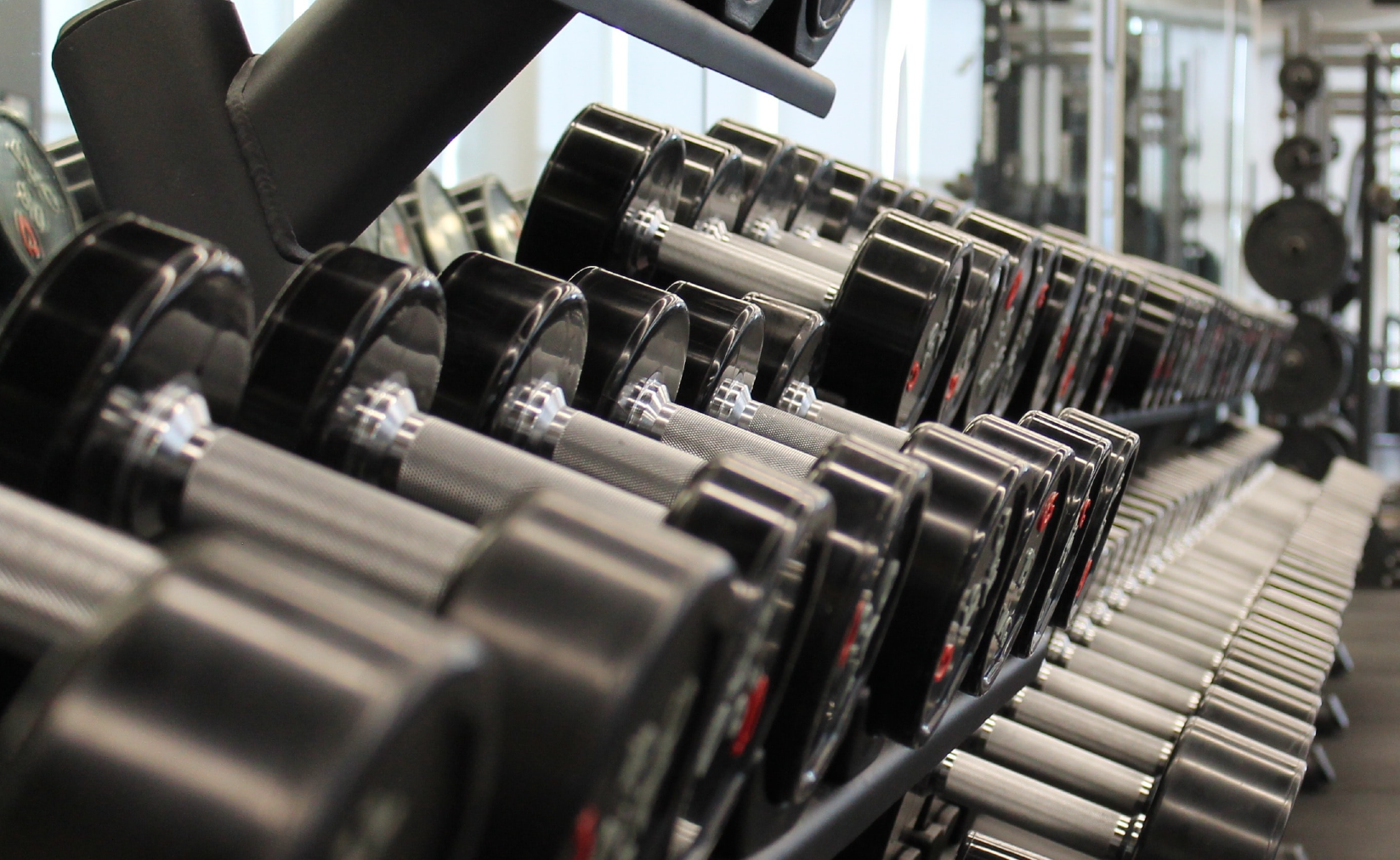
Disclaimer: This program may not be suited for everyone. Consult with your doctor or physical therapist before beginning this program to make sure it is appropriate for you. Innerforce and author not responsible for any injuries resulting from the use of this program.
Strength training is a great way to prevent injury and improve power and strength. This program is focused on leg and core strength as cycling, followed by running, are the two disciplines where we can make the most improvements with weight training. For swimming, sticking to resistance band work on the pool deck can have a better impact on swim performance – more on that to come!
This program is time-efficient, aiming for the most bang for your buck in terms of exercises that are functional and specific to triathlon. To improve time efficiency, I recommend doing supersets – alternating 2 exercises at a time so you aren’t just standing around during the rest period. Exercises are grouped together below in recommended supersets, but you can re-arrange if needed.
These sessions should take about 45 minutes. Starting out, the plan focuses on muscular endurance, with lighter weight and more repetitions, and less rest between sets. As you progress, move towards fewer reps and increased weight, with more rest. You should never feel like you are compromising your form to lift a heavier weight – form and technique is always first and foremost.
Phase 1: 1-3 months, 2-3x/week. 3 sets of 15-20 reps. Choose a weight that is light and progress as strength improves. You should feel like you could do a few more reps with good form when you stop each set.
Phase 2: 1-3 months, 2-3x/week. 3 sets of 8-12 reps. Increased weight and decreased reps. Again – form is a priority.
Phase 3: During racing season, 1x/week. 2 sets of 8-12 reps. This phase is to maintain strength gains made in the offseason during your race season. Continue with the load you used in Phase 2.
Warmup: Strength sessions can follow a swim, bike, or run workout, but should not be done directly before them if possible. Otherwise complete at least 5 minutes of running/biking/elliptical to warm up. I also recommend beginning with bird dogs to activate core muscles and prepare for lifts.
Bird Dog: Begin on all fours. Straighten one arm and the opposite leg, keeping your core tight and feel that butt cheek squeeze! Hold for ~ 1 second. Do not to overextend – your back should remain relatively flat, and the leg should be roughly parallel with the ground (It looks like I overextended a bit in the picture below – the leg is shown a bit high). A few sets of 10 is good to get the core activated.

Squats: (alternative exercise Leg Press):
1. Feet should be roughly pedal width apart.2. Can be performed with a barbell, or with a single dumbbell in a “goblet squat” variation
3. While bracing through the trunk, squat as if sitting into a low chair, keeping the knees over the feet, and return to standing.
4. Resistance loop band can be used around the lower thighs to provide a cue and activate muscles to keep the knees pointing straight ahead.
5. Leg Press machine can be done as an alternative – keeping the feet pedal width apart to mimic cycling motion.

Side Plank Progression:
1. Side plank can be performed with weight through the forearm or hand, whichever is more comfortable2. Form is most important – if unable to hold a side plank position, begin with knees bent and weight through the lower leg.
3. Keep the chest open and perpendicular to the floor
4. Hold side plank on each side for a duration that is challenging but you are able to maintain good form (no sagging hips or mountains).

Bulgarian Split Squat:
1. Begin with rear foot elevated on the surface that is about knee-high. You can use a barbell or two dumbbells/kettlebells for this activity.2. Keeping an upright chest and braced core, squat down with the front leg. Pay attention to your knee to make sure it is tracking forward and does not wobble in or out.

Hamstring Curls on Swiss Ball (alternate exercise hamstring curls on machine)
1. Begin on your back with a swiss ball under your lower legs, and hips raised off the ground.2. Bend your knees to curl your heels towards you and return to starting position.
3. This motion should be smooth and controlled in both directions.

Power Step-up:
- Begin standing in front of a box that is around 20” high with two light dumbbells in hand. The focus is on an explosive movement, so the weight should feel relatively light.- Beginning with one foot on the box, drive your opposite leg up to position parallel to the floor. You can come up onto the ball of your foot to mimic a running motion.
- Complete 10-15 repetitions on one leg before switching to the other one. Rest 3-5 seconds between reps to make sure to maintain a powerful movement.

Plank Progression:
1. Regardless of the type of plank, you are doing, the most important thing to focus on is maintaining a slight posterior pelvic tilt while planking. To do this, imagine pulling your belt buckle upwards, or act like a dog tucking its tail. You should feel your butt muscles squeezing and your lower abdominals kicking in to maintain this position. If you feel your lower back begins to extend and turn into a valley, then stop and rest.2. Pick the option below, and hold for an amount of time that is challenging to you but you can maintain good form. If you can comfortably hold for 1 minute with a posterior pelvic tilt, progress to the next.
3. Knee plank and regular plank can be done on elbows, or in high plank position on hands. I prefer elbows since this is our aero position.
4. The 3rd progression, stir the pot, is done on a swiss ball, with circular motions done with the arms as if you are “stirring the pot.”

Lunges:
1. With a dumbbell in each hand or a barbell, step forward into a lunge until the thigh is roughly parallel to the floor. Step forward enough so that your knee does not move past the toes at the lowest point of the lunge.2. Come back to standing, and repeat with the other leg. I prefer walking lunges, keeping the core engaged while you come up and step directly into the next lunge. If you feel wobbly while doing this, come back to standing with feet together before stepping into the next lunge.

Calf Raises:
1. Begin standing with feet roughly pedal width apart and a dumbbell in each hand.2. With slow and controlled motion, lift heels off the ground and lower back down.


Disclaimer: This program may not be suited for everyone. Consult with your doctor or physical therapist before beginning this program to make sure it is appropriate for you. Innerforce and author not responsible for any injuries resulting from the use of this program.
Strength training is a great way to prevent injury and improve power and strength. This program is focused on leg and core strength as cycling, followed by running, are the two disciplines where we can make the most improvements with weight training. For swimming, sticking to resistance band work on the pool deck can have a better impact on swim performance – more on that to come!
This program is time-efficient, aiming for the most bang for your buck in terms of exercises that are functional and specific to triathlon. To improve time efficiency, I recommend doing supersets – alternating 2 exercises at a time so you aren’t just standing around during the rest period. Exercises are grouped together below in recommended supersets, but you can re-arrange if needed.
These sessions should take about 45 minutes. Starting out, the plan focuses on muscular endurance, with lighter weight and more repetitions, and less rest between sets. As you progress, move towards fewer reps and increased weight, with more rest. You should never feel like you are compromising your form to lift a heavier weight – form and technique is always first and foremost.
Phase 1: 1-3 months, 2-3x/week. 3 sets of 15-20 reps. Choose a weight that is light and progress as strength improves. You should feel like you could do a few more reps with good form when you stop each set.
Phase 2: 1-3 months, 2-3x/week. 3 sets of 8-12 reps. Increased weight and decreased reps. Again – form is a priority.
Phase 3: During racing season, 1x/week. 2 sets of 8-12 reps. This phase is to maintain strength gains made in the offseason during your race season. Continue with the load you used in Phase 2.
Warmup: Strength sessions can follow a swim, bike, or run workout, but should not be done directly before them if possible. Otherwise complete at least 5 minutes of running/biking/elliptical to warm up. I also recommend beginning with bird dogs to activate core muscles and prepare for lifts.
Bird Dog: Begin on all fours. Straighten one arm and the opposite leg, keeping your core tight and feel that butt cheek squeeze! Hold for ~ 1 second. Do not to overextend – your back should remain relatively flat, and the leg should be roughly parallel with the ground (It looks like I overextended a bit in the picture below – the leg is shown a bit high). A few sets of 10 is good to get the core activated.

Squats: (alternative exercise Leg Press):
1. Feet should be roughly pedal width apart.2. Can be performed with a barbell, or with a single dumbbell in a “goblet squat” variation
3. While bracing through the trunk, squat as if sitting into a low chair, keeping the knees over the feet, and return to standing.
4. Resistance loop band can be used around the lower thighs to provide a cue and activate muscles to keep the knees pointing straight ahead.
5. Leg Press machine can be done as an alternative – keeping the feet pedal width apart to mimic cycling motion.

Side Plank Progression:
1. Side plank can be performed with weight through the forearm or hand, whichever is more comfortable2. Form is most important – if unable to hold a side plank position, begin with knees bent and weight through the lower leg.
3. Keep the chest open and perpendicular to the floor
4. Hold side plank on each side for a duration that is challenging but you are able to maintain good form (no sagging hips or mountains).

Bulgarian Split Squat:
1. Begin with rear foot elevated on the surface that is about knee-high. You can use a barbell or two dumbbells/kettlebells for this activity.2. Keeping an upright chest and braced core, squat down with the front leg. Pay attention to your knee to make sure it is tracking forward and does not wobble in or out.

Hamstring Curls on Swiss Ball (alternate exercise hamstring curls on machine)
1. Begin on your back with a swiss ball under your lower legs, and hips raised off the ground.2. Bend your knees to curl your heels towards you and return to starting position.
3. This motion should be smooth and controlled in both directions.

Power Step-up:
- Begin standing in front of a box that is around 20” high with two light dumbbells in hand. The focus is on an explosive movement, so the weight should feel relatively light.- Beginning with one foot on the box, drive your opposite leg up to position parallel to the floor. You can come up onto the ball of your foot to mimic a running motion.
- Complete 10-15 repetitions on one leg before switching to the other one. Rest 3-5 seconds between reps to make sure to maintain a powerful movement.

Plank Progression:
1. Regardless of the type of plank, you are doing, the most important thing to focus on is maintaining a slight posterior pelvic tilt while planking. To do this, imagine pulling your belt buckle upwards, or act like a dog tucking its tail. You should feel your butt muscles squeezing and your lower abdominals kicking in to maintain this position. If you feel your lower back begins to extend and turn into a valley, then stop and rest.2. Pick the option below, and hold for an amount of time that is challenging to you but you can maintain good form. If you can comfortably hold for 1 minute with a posterior pelvic tilt, progress to the next.
3. Knee plank and regular plank can be done on elbows, or in high plank position on hands. I prefer elbows since this is our aero position.
4. The 3rd progression, stir the pot, is done on a swiss ball, with circular motions done with the arms as if you are “stirring the pot.”

Lunges:
1. With a dumbbell in each hand or a barbell, step forward into a lunge until the thigh is roughly parallel to the floor. Step forward enough so that your knee does not move past the toes at the lowest point of the lunge.2. Come back to standing, and repeat with the other leg. I prefer walking lunges, keeping the core engaged while you come up and step directly into the next lunge. If you feel wobbly while doing this, come back to standing with feet together before stepping into the next lunge.

Calf Raises:
1. Begin standing with feet roughly pedal width apart and a dumbbell in each hand.2. With slow and controlled motion, lift heels off the ground and lower back down.

SEE WHAT CUSTOM APPAREL LOOKS LIKE

GEAR UP
MORE FROM THE BLOG
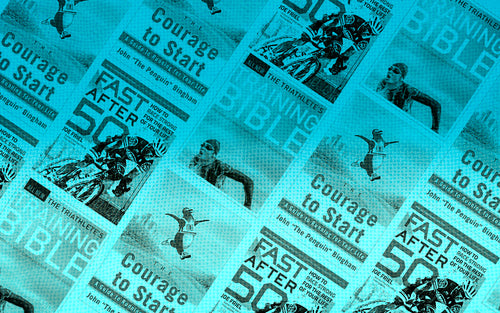
The Essential Reading List for Aspiring Triathletes
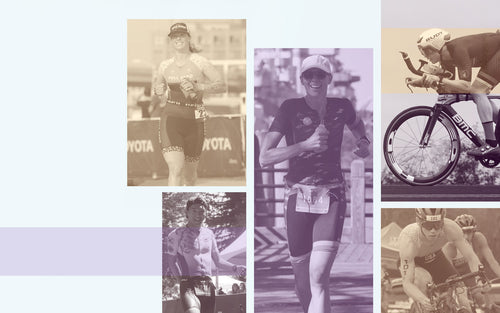
The most challenging competitions in the world: A guide to the toughest races on the planet
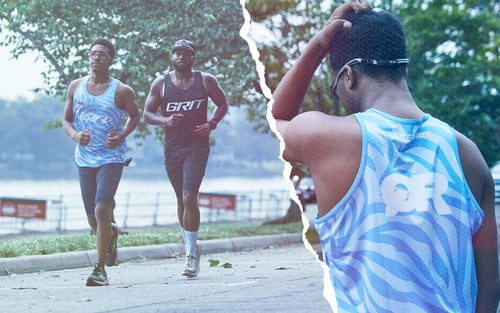
How to Keep Young Athletes Motivated in Their Training Program
Let’s admit it: many athletes struggle to find motivation for their training. Experts from the University of London and the National...
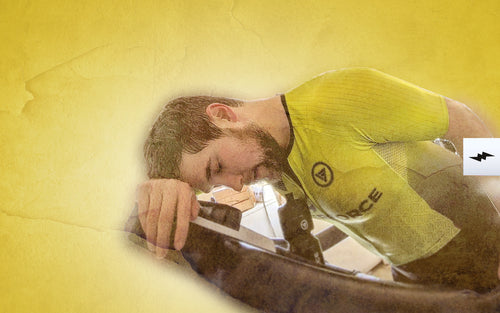
How To Adapt Your Training When Things Go Wrong
It is pretty easy nowadays to find the perfect training plan online for whatever event you have coming up. The...



